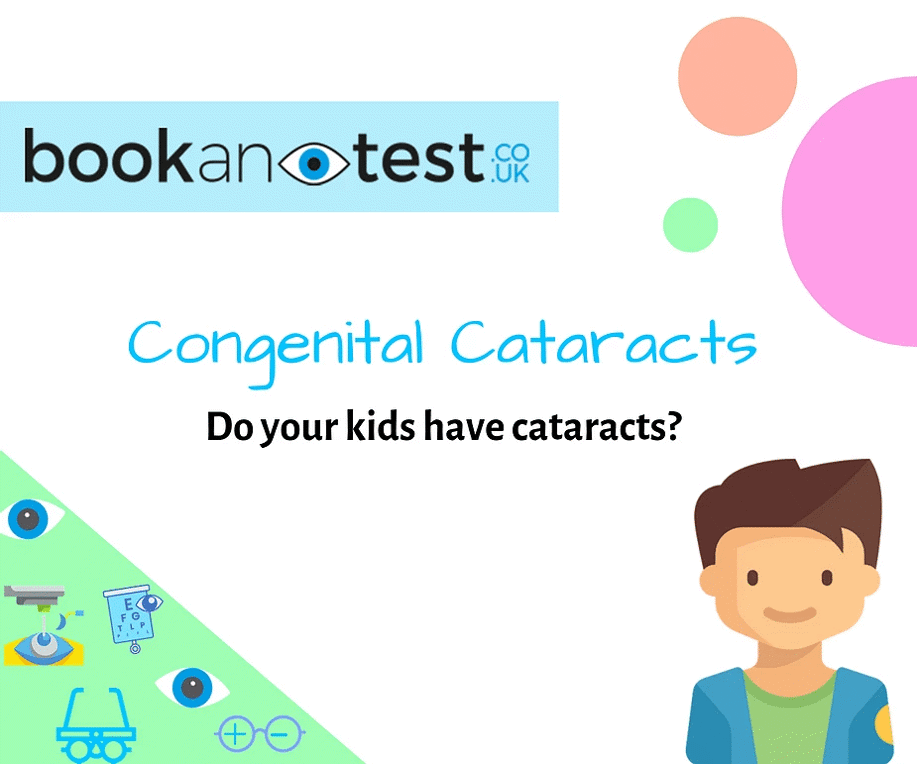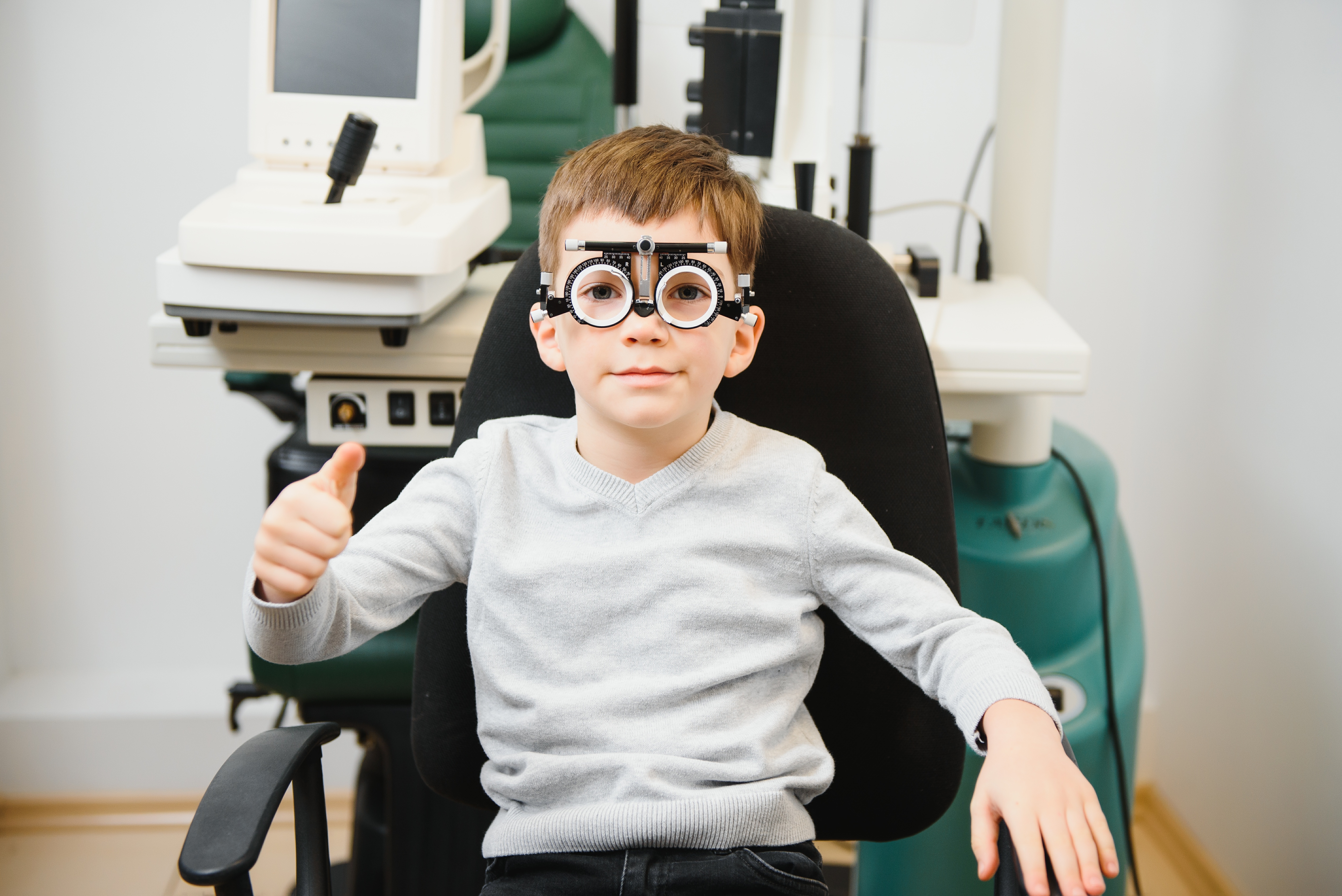A cataract is a cloudy lens within the eye that obscures vision. Congenital cataracts are present at birth or develop shortly afterwards.
When a child is living with an eye condition, parents and caregivers take on much of the responsibility of care. We’ve created this guide to provide general information about the condition including its causes, symptoms and treatment options as well as tips and advice to provide the best support possible.

Congenital Cataracts Explained
When you think of cataracts, you are likely to think of someone older. This is because the condition is most commonly caused by ageing. However, other less common types exist, including congenital cataracts.
The eyes are affected in the same way with the lenses becoming clouded and causing reduced vision. The difference is how the cataracts are caused and when they develop. Congenital tends to mean something present at birth – in the case of cataracts, it may also refer to when they develop in the first few years of life.
Congenital cataracts have various causes and each case requires a unique approach to care and treatment. For parents and caregivers, care involves working with healthcare professionals to make the best decisions about treatment and management to help each child enjoy a better quality of life.
Discovering your baby has cataracts can be a challenging and frightening experience. It’s important to acknowledge these concerns and seek professional and community support.
Causes and Risk Factors
Congenital cataracts have several possible causes:
Genetics: Most cases of congenital cataracts have no obvious cause other than genetics. This means the eye’s clouded lens has been caused by a gene passed on by one of the parents. This is why an infant who has a family history of congenital cataracts is more likely to have them
Infections during pregnancy: Some infections experienced by mothers during pregnancy can increase the risk of a baby having congenital cataracts. A wide number of infections are associated with congenital cataracts including chicken pox, rubella, toxoplasmosis and herpes simplex virus.
Children and babies may develop cataracts after they are born through certain conditions like diabetes and galactosaemia or eye injury. When children have a condition that may lead to cataracts, their eye health should be closely monitored through regular eye exams.
Recognising Cataract Symptoms in Babies and Children

Identifying symptoms in babies and young children can be difficult. In the case of congenital cataracts, they are often spotted by medical professionals during early health checks that are carried out within a few days of birth and then again several weeks later. Nevertheless, learning to spot symptoms may help you to catch an undiagnosed case.
The most noticeable symptoms of cataracts in babies and young children are:
- Poor vision: This is not always easy to identify, but signs of poor vision may include a lack of eye contact, unexpected eye movements, or if they respond less when presented with objects visually. Cataracts often only cause mild vision loss initially, so these signs may not be present in every case.
- Cloudy eyes: Cataracts cause a clouding of the lens within the eye. This can appear as a cloudy or white area within the pupil. This symptom can affect one or both eyes.
- Light sensitivity: To people with cataracts, lights may appear too bright. In babies and young children, this could be noticeable as squinting or avoiding bright lights.
- Abnormal eye movements or misaligned eyes: In some cases of cataracts, eyes may shake or move in unexpected ways – this is called Nystagmus. Strabismus, or crossed eyes, may also occur.
Early diagnosis of cataracts is important because left untreated they can lead to permanent vision loss and complications like lazy eye. If you do spot the signs of cataracts in your baby or child it’s important to have them checked out as soon as possible.
Treatment of Congenital Cataracts
Surgery is the most common treatment for cataracts. Specialised lenses are sometimes used to manage vision loss while cataracts are closely monitored, but in most cases, surgery is required to repair vision and stop the condition from worsening.
Cataract surgery is considered to be safe and effective, even from a very young age. However, it comes with risks including bleeding, infection and damage to other parts of the eye. Your doctor or optometrist will give you specific information about surgery for your child.
The surgery works by removing the clouded lens and replacing it with an artificial one called an Intraocular Lens (IOL). The surgery is carried out under general anaesthetic and for children usually takes between 1 and 2 hours.
In congenital cataracts, doctors usually recommend an operation as soon as possible. This may be one or two months are the baby is born.
The operation usually requires an overnight stay to monitor the eye's recovery. Otherwise, a patch or shield is used to protect the recovering eye and eye drops are applied to reduce irritation and swelling.
Vision is usually improved shortly after cataract surgery, but in many cases, patients will still have to wear spectacles or contact lenses after the eyes have healed. This is because the focusing power of the artificial lens is not as strong as a natural one.
Connecting with a Supportive Community
Children require the support and care of their parents and caregivers. For them, support comes from healthcare professionals, but also from communities either online or locally who can provide information, shared experience and support.
Many resources and communities exist that can create vital connections, whether it be an online forum or a regular meeting.
We aim to connect people looking to learn more about eye health and care. With social media networks and connections to independent opticians and local communities, you can use our platform as a way to learn more about children’s eye care and meet other people with the same goal.
Encouragement for Caregivers
Learning your child has an eye condition is a challenging experience that many parents have to go through. Adapting to your child’s needs as a caregiver is a big part of parenthood. With a condition like cataracts, taking proactive steps in eye care helps you manage both the practical and emotional sides of the experience.
Professional support through regular eye examinations and appointments with specialists is one part of managing children’s eye care. These appointments not only ensure your child gets any care they need but also give you peace of mind that their condition is being taken care of.
Community support through online or in-person networks also offers assistance in the form of information, shared experience and emotional support.
Improving eye health through diet, exercise and eye protection can also make a big difference to children’s well-being in the long run.






